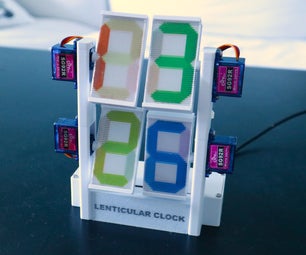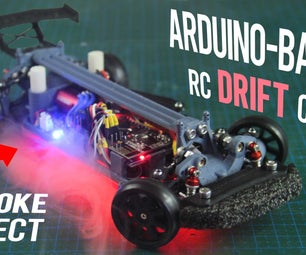Introduction: PCB: GPS and GSM Based Vehicle Tracking System
GPS and GSM based Vehicle Tracking System
June 30, 2016, Engineering Projects The project GPS and GSM based Vehicle Tracking System uses Global Positioning System (GPS) and global system for mobile communication (GSM), which makes this project more economical than implementing a communication system through GPS satellites in two-way GPS communication system.
Introduction to GPS and GSM based Vehicle Tracking System
Tracking has now been a recent trend followed everywhere. This process helps us to collect details and, at the same time, prevent robbery of devices being tracked. The project ‘GPS and GSM based Vehicle Tracking System,’ which employs microcontroller as its chief component, is mostly implemented to keep track of vehicles in recent times. The ‘GPS and GSM based Vehicle Tracking System’ project utilizes a GSM modem as a replacement for one of the GPS devices to ensure a two-way communication process. The GSM modem and SIM card combination employ the same technique as a standard cell-phone to implement the tracking process. The overall system of ‘GPS and GSM based Vehicle Tracking System’ is so easy and straightforward that it can be executed anywhere. This device can either be fixed or mounted in any corners of the vehicle or expensive piece of equipment which needs protection. Yes, we can also track equipment with this device when planted properly. Once the proper installation process is followed, we now have total access to the pathway of the vehicle or any object under consideration. Through the help of our mobile phones, we get complete information about the whereabouts of that applicant.
The key component in the project ‘GPS and GSM based Vehicle Tracking System’ is a small chip i.e. SIM attached to the GSM modem which relays the current location of that object in the text format i.e. SMS back in the phone once the mobile number of that SIM is dialed. There is no particular time limit set for this project, the user can request for the location of the object at any time and any location where the mobile network is reachable. Be it either a fleet of vehicles or a number of expensive equipment’s, this project is applicable everywhere to locate them anywhere and at any instant despite the long distance. The fact that it allows people to achieve information they need form a distant place without having them to be physically present there makes it more flexible.
Step 1: Step 1: Circuit Description of GPS and GSM Based Vehicle Tracking System
The circuit diagram of the project “GPS and GSM based vehicle tracking system” is depicted in fig.1. As we can see clearly, the chief components employed in this project are: microcontroller, GPS module, GSM modem, and 9V DC supply as a source of power for the project. The working of the project ‘GPS and GSM based vehicle tracking system’ can be summarized in points below:
1. The location detail of the vehicle/object is collected by the GPS module from the satellite, this information is in the form of latitudes and longitudes scale.
2. Thus collected information is then fed to the microcontroller. Necessary processing is done and then the information is passed onto the GSM modem.
3. The GSM modem collects the information for the microcontroller and then transfers it to the mobile phone through the SMS which is in text format.
Step 2: Step 2: Components Description of GPS and GSM Based Vehicle Tracking System
ATmega16 microcontroller
This microcontroller (IC2) is the major component that performs as the brain of the project. It acts as an interfacing medium between multiple hardware peripherals used in this project. The IC is an 8-bit CMOS based on the AVR enhanced RISC architecture which consumes less power to operate. We use a serial interfacing technique to connect this IC2 with GPS module and GSM modem. Out of the multiple data generated by the GPS module, here in the project ‘GPS and GSM based Vehicle Tracking System’ we need NMEA data to track the location of the vehicle. The microcontroller processes this data and then sends it through a GSM modem to the mobile phone. RS-232 is the defined protocol to establish a serial communication process in between the chief components; the microcontroller, GPS and GSM modem. And, in order to transform RS-232 voltage levels into TTL voltage levels, we make use of a serial driver IC MAX232 (IC3). The mobile number corresponding to the SIM attached to the module must be mentioned in the source code of the microcontroller. This number resides safely in the internal memory of the MCU.
iWave GPS module
iwave GPS module is preferred for this project, the figure of which is shown in fig.2. The main function of this module is to transmit location data to the microcontroller. The connection between IC2 and GPS module is set by connecting transmit pin TXD of GPS to the microcontroller via MAX232. The NMEA data defined an RS-232 communication standard for devices that include GPS receivers. The NMEA-0183 standard which is actually a subset of NMEA protocol is supported properly by the iWave GPS module. This module operates in the L1 frequency (1575.42 MHz) and up to a fixed territory of about 10 meters in the sky, it generates accurate information. For this purpose, an antenna must be placed in the open space and at least 50 percent of space visibility is a must.
GSM modem
SIM300 GSM modem is implemented in this project and its corresponding figure is given in fig. 3. The main function of this modem is to exchange data. It is a tri-band SIM300; GSM/GPRS engine that works on various range of frequencies EGSM 900 MHz, DCS 1800 MHz, and PCS 1900 MHz.In order to set up the connection between GSM modem and microcontroller, we connect transmit pin TXD and receive pin RXD of GSM modem via MAX232 (IC3) with the microcontroller (IC2). Similarly, port pin PD0 (RXD) and port pin PD1 (TXD) of the microcontroller are connected to pins 12 and 10 of MAX232, respectively.
In this project, a 9V battery serves as the main source of energy. Since the microcontroller and MAX232 are powered by a 5Volts, we need to convert supply by using a 7805 regulator (IC1). The presence of the power supply is indicated by LED1.
Software Program of GPS and GSM based Vehicle Tracking System
Because of the program simplicity, we have chosen “C” language to program microcontroller and the compilation process is carried out by a software called AVR studio. One must be extra careful to include an exact phone number in the source code so as to receive a call from the SIM card which is set with the GSM set up. To burn the hex code of the program into MCU using PonyProg2000 software, it was really difficult. If suited, we can also implement, any suitable tool that can be searched. As mentioned in the software, to receive the data from satellites we used the GPS module with a 9600 baud rate. The NMEA protocol used in this project is easily decoded by the software. Talking about the protocol, it has a predefined format through which data are transmitted simultaneously by the GPS module to the device with which it is interfaced. The protocol constitutes a set of messages which uses a set of ASCII character and have a defined format that is continuously sent by the GPS module to the interfacing device. The information is provided by the GPS module or receiver in the form of ASCII comma-delimited message strings. And, each message is coded with a dollar sign ‘$’ (hex 0x24) at the start and (hex 0x0D 0x0A) at the end. As mentioned already in the previous section, the message content provided by the software output protocol constitutes two different types of data; global positioning system fixed data (GGA) and geographic position latitude/longitude (GLL). For our project, we only require GGA content. The data format for latitude and longitude details is set as ‘degrees, minutes and decimal minutes’ format; ddmm.mmmm initially. But, since recent mapping technologies demand information of latitude and longitudes details in the format of decimal, degrees, in ‘dd.dddddd’ along with the respective sign, some sort of conversion process is essential to present data in the desired form. The negative sign is fixed for south latitude and west longitude. Regarding the development of a message string, the NMEA standard defines how to create a new message string with a dollar sign ($) that evolves a completely new GPS message.
For instance:
$GPGGA,002153.000,3342.6618,N,11751.3858,W Here, $GPGGA denotes the GGA protocol header, second data 002153.000 refers to the UTC time in hhmmss.ss format, third data 3342.6618 is the latitude of the GPS position fixed data in ddmm.mmmm format and the last one; 11751.3858 is the longitude of the GPS position fixed data in dddmm.mmmm format. The alphabets in between direct particular directions as; ‘N’ stands for North and ‘W’ for West. Being provided with data in such a format, anyone will be able to extract details of the location they prefer to know either by going through a piece of a map or going through the software available.
Step 3: Step 3: Construction and Testing of GPS and GSM Based Vehicle Tracking System
Figure 4 shows the complete circuit with the details of the size of the single-side PCB layout of our project. The component layout of this project is illustrated in fig.5.
PARTS LIST OF GPS AND GSM BASED VEHICLE TRACKING SYSTEM:
Resistor (all ¼-watt, ± 5% Carbon)
R1 = 680 Ω
R2 = 10 KΩ
Capacitors
C1 = 0.1 µF (Ceramic Disc)
C2, C3 = 22 pF (Ceramic Disc)
C4 – C8 = 10 µF/16V (Electrolytic Capacitor)
Semiconductors
IC1 = 7805,
5V Regulator IC2 = ATMega16 Microcontroller
IC3 = MAX232 Converter
LED1 = 5mm Light-emitting diode
Miscellaneous
SW1 = Push-To-On Switch
XTAL1 = 12MHz Crystal
GPS Module = iWave GPS module
GSM modem = SIM300
9V PP3 Battery

Participated in the
PCB Design Challenge








